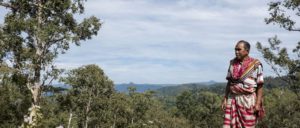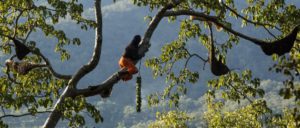In a series of four videos and associated articles, the Center for International Forestry Research‘s (CIFOR) Forests News looks at migration research in Nepal, and how migration impacts lives and landscapes in the village of Nalma.
The importance of migration to rural livelihoods in Nepal is not being recognized in forestry policy or by donors – and nor is the diversity of women’s experience, argues a chapter of Gender and Forests: Climate Change, tenure, Value Chains and Emerging Issues, which was coedited by Carol J Colfer, CIFOR and FTA scientist Bimbika Sijapati Basnett, and FTA gender coordinator Marlene Elias.
Thirty percent of Nepal’s GDP comes from remittances – the second highest proportion in the world. Around half a million people, or eight percent of Nepal’s total population, applied for a permit to work abroad in 2014 – 94 percent of them were men – and that does not include the many unregistered migrants or those who migrated within the country. Despite this, Nepal’s recent Forest Sector Strategy (2012-2022) mentions migration just once.
First up in the series, Sijapati Basnett talks about her research in Nalma in Unpacking migration and gender in Nepal. The video is accompanied by the article Unpacking migration and gender in Nepal’s community forests, which considers that changing migration patterns bring both burdens and benefits for women.
Second, in Left behind in Nepal: Sita’s story, the series looks at Sita Pariyar, a 29-year-old mother of two living in Nalma who has balanced housework, childcare and field work since her husband moved to Qatar as a migrant worker. Nearly three-quarters of Nepal’s young male population now works overseas, sending money back to their families in the form of remittances that contribute almost 30 percent of the country’s gross domestic product. On the home front, women, children and the elderly are left to keep village life running, reshaping traditional roles, responsibilities and land management practices.
It is accompanied by Left behind: The women and elderly of Nalma, which aims to give a voice to those left back home by migrant workers in Nepal.
Third, through the video Left behind in Nepal: Shanti’s story, Forests News follows Shanti Tamang, a 20-year-old mother with a 3-year-old son, who was left to live with her in-laws after her husband went abroad to work. While her husband sends back better wages from Qatar, Shanti still has to struggle with the responsibilities of looking after the family and working in the fields to make ends meet.
As many migrant workers leave their villages behind, landscapes and social hierarchies are being shaken from tradition, which is explored through In Nepal, what migration means on the home front.
The fourth installment, The returnee: Inside the lives of migrant workers from Nepal, followed Bahadur. With seven children and a wife of 21 years whom he had married for love, Bahadur had every reason to feel confident that his move abroad from the village of Nalma in Nepal to Saudi Arabia was a financially wise choice for his family. All was going well until the news came, six months into his time abroad, that his wife had eloped with someone else, leading Bahadur to return as soon as possible to his children.
A final in-depth article, The dreamer, the progressive and the returnee, looks at the experiences of several Nepali migrant workers now choosing to stay in their hometown. Those now remaining in Nepal are helping enliven efforts to farm the surrounding land, and to kickstart new initiatives such as permaculture and ecotourism.
Nepal is well known for its widespread adoption of community forestry, where responsibility for managing forests is devolved to the people who live around them. But as international and circular migration for employment purposes becomes more common – and male-dominated – who actually lives there is in constant flux. In reality, Sijapati Basnett says, “migration is both a burden and a benefit for women who are left behind.”
The first article described above was written by Kate Evans. The following three articles, which were conducted in collaboration with Forest Action Nepal, were written by Gabrielle Lipton, Leona Liu and Bimbika Sijapati Basnett. All were originally published at CIFOR’s Forests News.
For more information on this topic, please contact Bimbika Sijapati Basnett at B.Basnett@cgiar.org.
This research forms part of the CGIAR Research Program on Forests, Trees and Agroforestry, which is supported by CGIAR Fund Donors.













